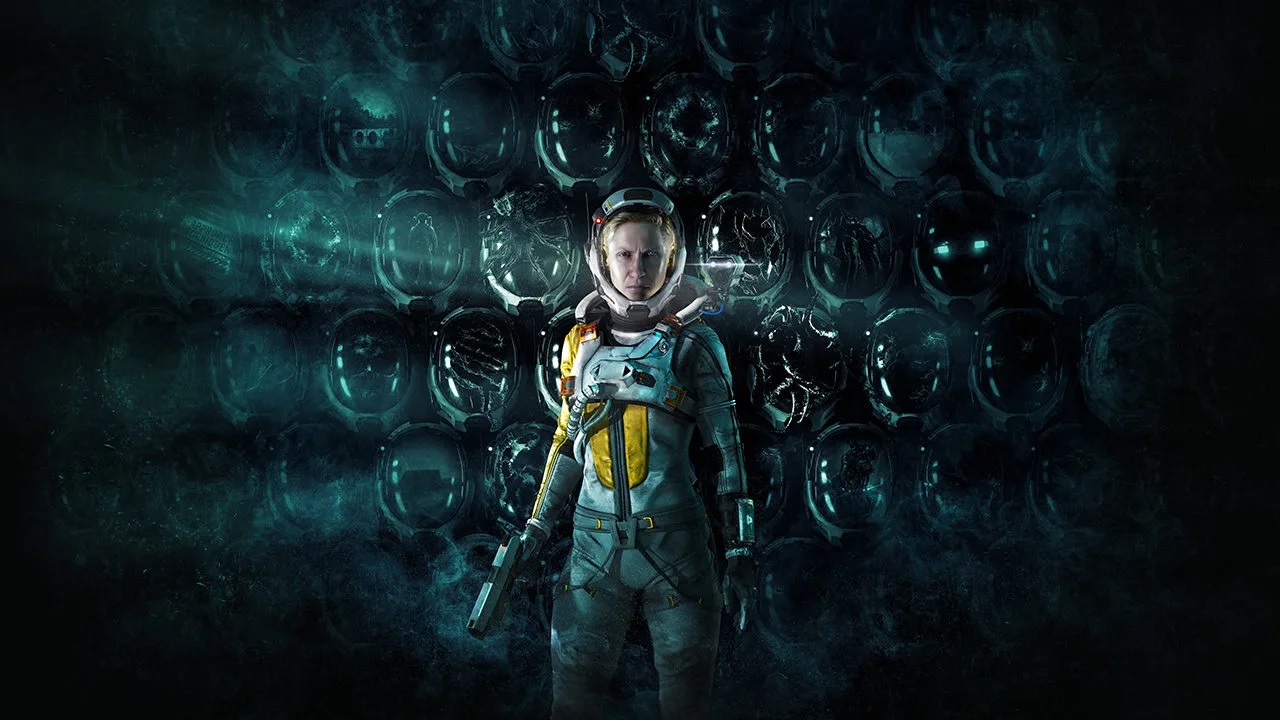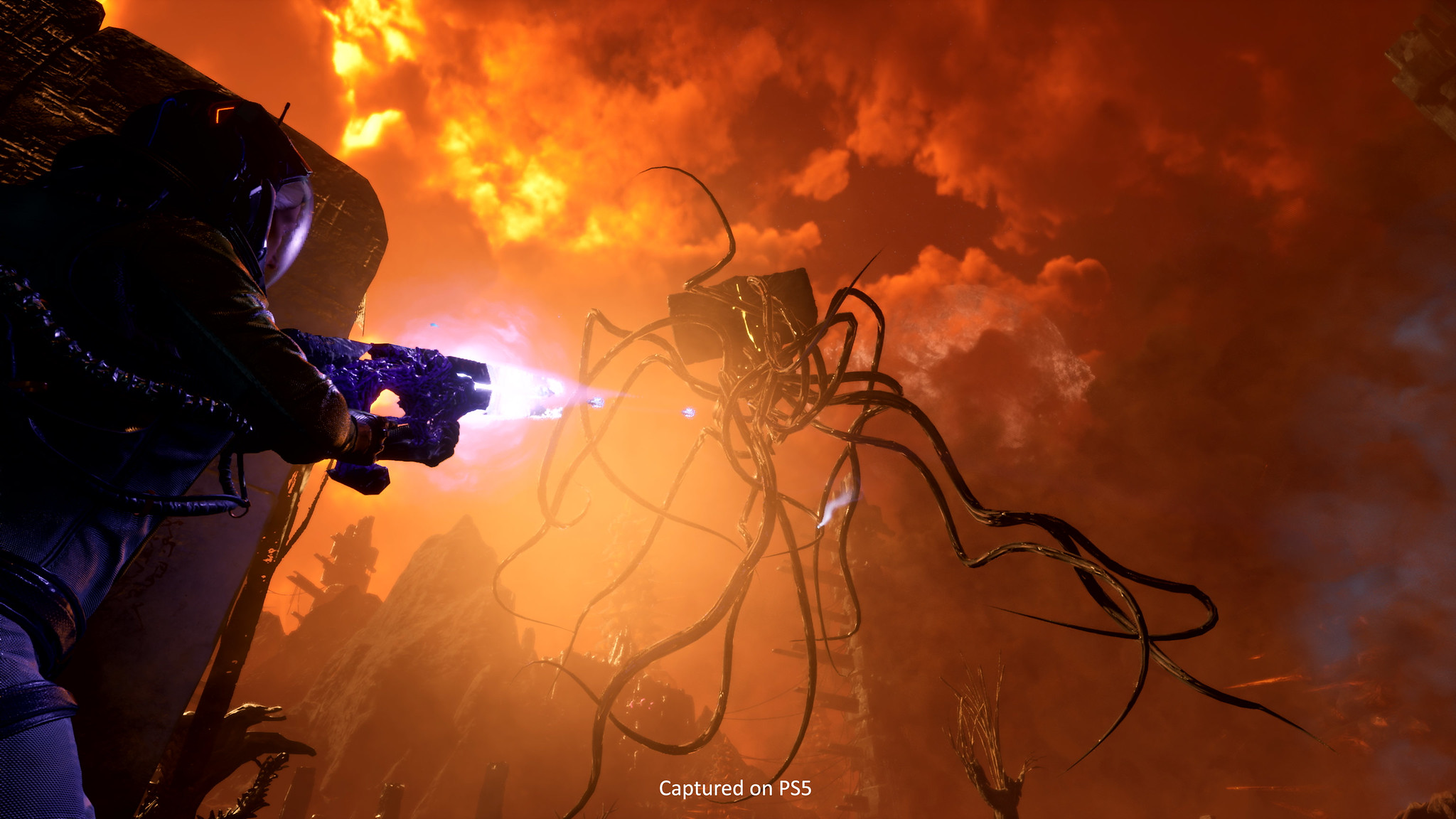Returnal hands-on preview: A PS5 exclusive worth the hype

I’ve played only the first few hours of Returnal, but it’s already one of the most daring PS5 exclusives out there. This sci-fi action/adventure game may look like a traditional third-person shooter, but it’s not. Returnal is a roguelike, sharing more DNA with FTL: Faster Than Light or The Binding of Isaac than with Mass Effect or Gears of War. For years, fans of the difficult, unpredictable genre have wondered what a big-budget, 3D version of a roguelike might look like. Returnal provides an answer — and it looks good.
For those who haven’t followed PS5 news extensively, Returnal was one of the first big exclusives that Sony announced for the system last year. It stars a woman named Selene, whose ship crash-lands on a hostile alien planet. There, she must rebuild her inventory and equip herself with odd alien gadgetry to survive the deadly flora and fauna. But every time Selene dies, she returns to her spaceship empty-handed — and the environment has changed radically around her. It’s an eerie, action-packed story about life, death and space exploration.
- PS5 restock update today — track now on Twitter, Walmart, Best Buy and more
- Play the best PS5 games
- Plus: Returnal shows off just what the PS5 is capable of — here's how
Sony sent Tom’s Guide an early review copy of Returnal, and we’re slowly working our way through it. (Emphasis on “slowly” — this game does not pull any punches in terms of difficulty.) While our full review will be ready next week, for the moment, we can discuss the game’s early stages, including the general flow of gameplay and Returnal’s unique storytelling style.

Life and death on a hostile planet
As discussed above, Returnal stars an astronaut named Selene who fights her way across a hostile, shifting planet, gathering equipment and getting more powerful along the way. An equally important part of gameplay, however, is losing just about everything upon death. And you will die, fairly often. The game expects you to, and in fact, it’s absolutely necessary to advance the story.
After a brief tutorial, you’ll set out into the game’s first biome (there are six altogether), which is a dark, rainy jungle, full of vine-like tentacles and jagged terrain. One thing that impressed me right away was just how subtle the haptic sensations in the DualSense controller felt. When you emerge from your spaceship into the rain, you can “feel” the tiny water droplets on your fingertips, which increase and decrease in intensity depending on how much tree cover you have. It can admittedly be a little distracting, but it’s extremely atmospheric.
The gameplay loop works like this: You start off with a standard pistol, and very little else. You can run, jump, dash and shoot. Your enemies — which are mostly doglike, tentacled monstrosities at first — will fire waves of projectiles at you in a bullet-hell shooter style. You can shoot through these projectiles, dodge them, or find cover behind one of the game’s many pillars or rock mounds. The occasional platforming section breaks up the combat. These are pretty simple, requiring jumps, dashes and upgradeable gear that you find along the way.
What’s interesting in Returnal isn’t the moment-to-moment gameplay. Rather, it’s the game’s structure. As you explore the biome, you’ll find better pistols, as well as an assortment of rifles and other, more exotic weapons. You can carry only one at a time, so you’ll have to decide whether you want raw power or useful secondary features, like homing or area-of-effect shots. You’ll also pick up health upgrades, weapon mods and “parasites” — native fauna that confer both negative and positive effects on Selene for the remainder of a run.
Get instant access to breaking news, the hottest reviews, great deals and helpful tips.
There are also two kinds of currency to collect: Oblities, which disappear after death, and Ether, which does not. Ether can help you purify Artefacts, items which could confer huge benefits, or cause your equipment to acquire a Malfunction. Since you lose Artefacts (and Malfunctions) when you die, however, using Ether requires a significant risk/reward calculation.
In fact, Returnal’s risk/reward balance in general is one of the best things about the game. You can go off the beaten path for some fantastic rewards — but you’ll have to face down incredibly tough enemies to get them. You don’t have to fight every single enemy or undertake every platforming challenge. But if you don’t, you might miss out on gear that will help you survive the next encounter.
Unlike some less punishing “roguelites,” you keep very little between runs in Returnal — just some exploration and platforming abilities. Still, even though the penalties for dying are harsh, that’s also a necessary part of gameplay.

Selene’s story
The concordance between the gameplay and story is one of Returnal’s strongest aspects. Selene returning to her ship between runs isn’t just an arbitrary checkpoint. The game’s tutorial establishes that Selene’s constant life-and-death cycles are an inextricable part of the alien world’s landscapes. (She’s understandably horrified to come across her own corpse in an early area.)
Since Selene can pick up audio logs that document her past selves’ adventures as she goes, the story has a strong mystery element to it. Why has Selene tracked a signal to this planet? Why does the planet kill her and keep bringing her back? How many times has she gone through this cycle? And, of course, is there any way to escape the recurrence? If you liked the various “time loop” episodes of Star Trek, you’ll probably like the story in Returnal, too.
Just as Returnal’s levels are procedurally generated, so too are the audio logs you’ll find in them. As such, dying in Returnal is just another way to advance the story. When you explore a whole new landscape after dying, you also have an opportunity to come across brand-new audio logs, which fill in important parts of the backstory-heavy narrative. You’ll also occasionally encounter weird flashes from Selene’s past, including people and places from her past inexplicably appearing on the alien world.
We’ll leave more detailed coverage of Returnal for our full review. But in the meantime, it seems to be one of the more daring and clever Sony exclusives in a while. Returnal is not catering to the widest audience possible; in fact, a lot of gamers may find the difficult, demanding gameplay loop too punishing, and put the game down in frustration after one false move ends an otherwise-promising run.
On the other hand, roguelike fans who always wondered what one would look like with a major publisher behind it will find a lot to like here. Returnal may turn a whole new audience of players onto the genre.

Marshall Honorof was a senior editor for Tom's Guide, overseeing the site's coverage of gaming hardware and software. He comes from a science writing background, having studied paleomammalogy, biological anthropology, and the history of science and technology. After hours, you can find him practicing taekwondo or doing deep dives on classic sci-fi.
